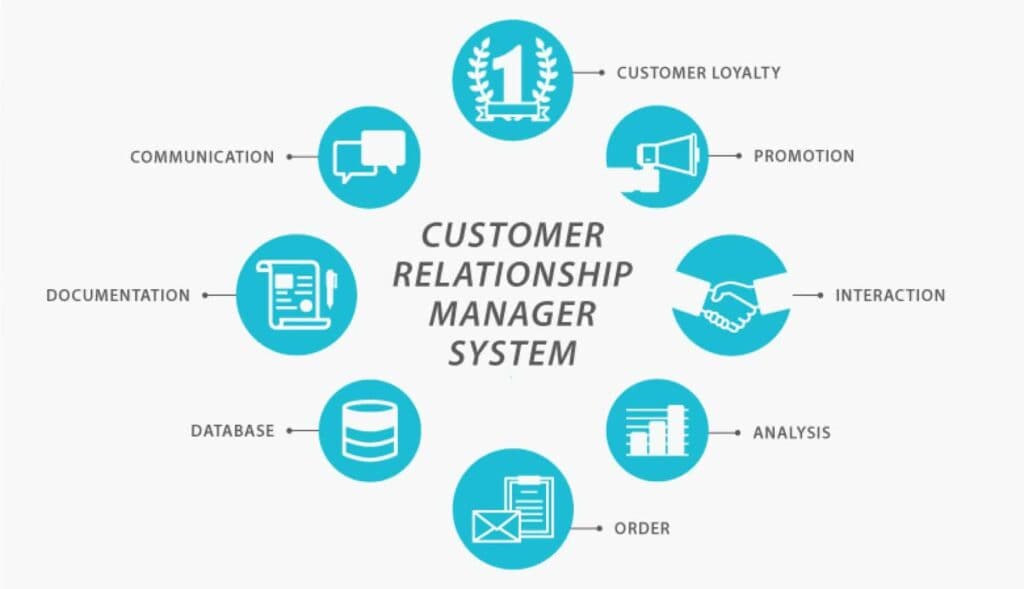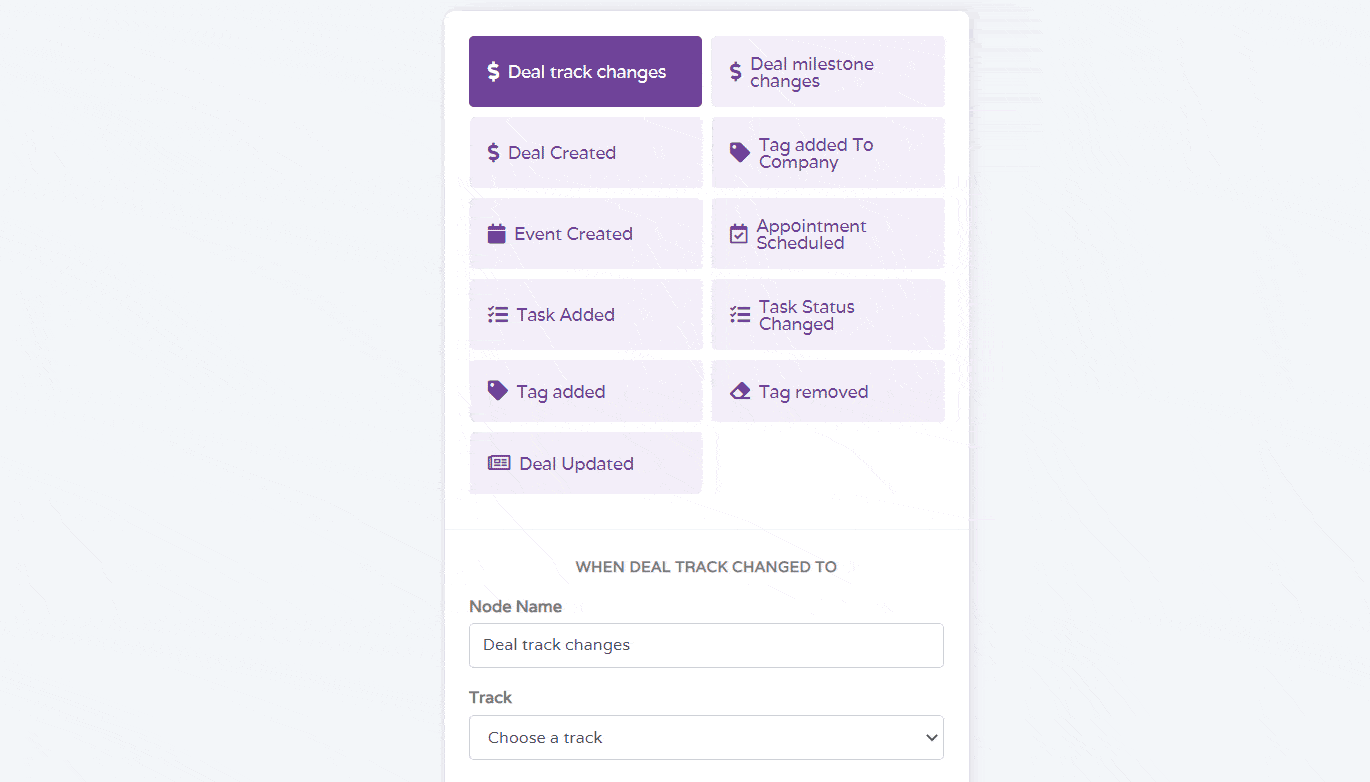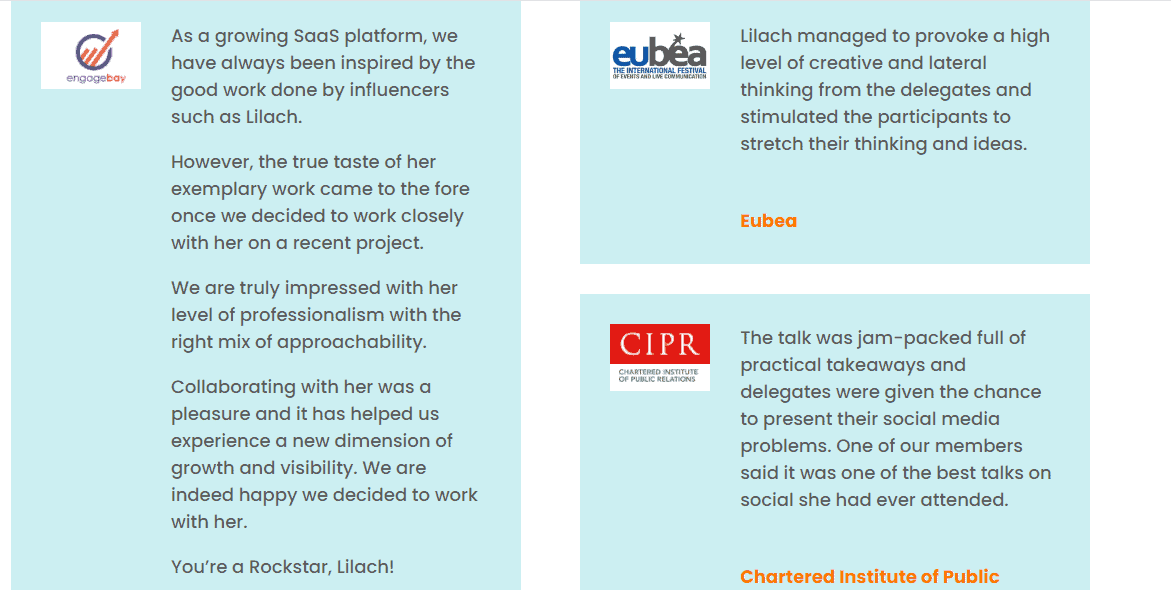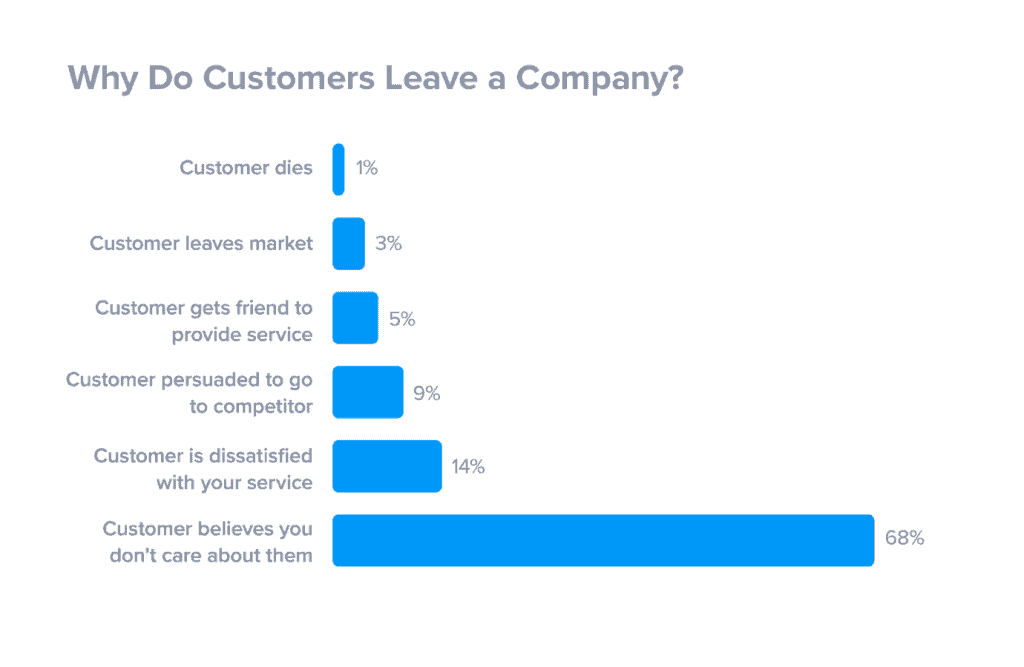The age of the customer has changed the rules of business. Companies have now shifted their focus away from products & services and towards customer satisfaction and loyalty.
According to Forbes, 90% of CEOs believe their customers have the greatest impact on their business.
The new customer-centric model has changed the landscape of how customers interact with your business.
A vast array of new sales technologies and digital marketing tools, unpredictable consumers with rapidly changing interests, and growing innovations have raised customer expectations.
Customers now need a frictionless experience to stay loyal to a business.
With this in mind, customer management is more critical than ever before.
But what is customer management, exactly? And how can you devise an effective plan that incorporates omnichannel marketing to build stronger customer relationships?
In this guide blog post, we’ll tell you what customer management is and why it matters.
We’ll also explore 10 powerful customer management strategies you can use to increase customer loyalty and grow your business.
Table of Contents
What is Customer Management?
The definition of customer management is the processes, practices, systems, and applications that a company uses to manage its relationships with existing customers and new prospects.
A customer management strategy can build lasting customer relationships and grow your business.
Building relationships with customers is typically accomplished with marketing campaign management tools such as CRM and others. A successful CRM strategy combined with customer management strategies results in customer success.
This concept is also known as customer relationship management (CRM).

Typically, many large companies will use a CRM system to collect, store, and organize customer data, which helps to simplify customer management at scale.
However, even small companies use CRM platforms today, as they provide many great benefits to improving customer retention rates and driving sales revenue.
The customer journey doesn’t end with a sale.
In fact, with the right customer management strategies in place, the initial point of conversion is just the beginning of a lasting relationship with a new customer who can soon become a loyal brand advocate.
When customer management is done right, you can encourage people to return to buy more of your products and services, time and time again.
10 Essential Customer Management Strategies to Supercharge Customer Loyalty
In a data-driven age, marketers can leverage insights from CRM tools to guide their customer management strategies.
If you’re keen to increase customer loyalty, here are 10 customer management strategies that can help you improve and enhance client relations.
- Make the most of email sequences
- Use live chat for excellent customer service
- Personalize your SMS marketing
- Invest more time in audience segmentation
- Use push notifications
- Make tailored landing pages
- Build influencer partnerships
- Create interactive content
- Focus on data security
- Use a good customer management software
#1. Make the most of email sequences
There are over 3.8 billion global email users, representing a massive, prosperous audience for virtually any business, regardless of what product or service you offer.
The beauty of email marketing is that it offers your business a direct line of communication straight to the inbox of customers or new leads.
As a result, you can escape the cluttered noise on social media to speak directly with people in a one-to-one conversational style.
Email is inherently personal, and the more personalization you use in your emails, the more likely it is that people will read them.
Over time, this form of communication is an effective customer management tactic that boosts customer engagement.
#2. Use live chat for customer service
In 2019, live chat went mainstream, and all the evidence suggests that customers love it.
No longer do people have to wait on hold to speak to customer service reps. Instead, they can instantly connect with agents to get fast solutions to any queries or problems. You can hire a project manager to manage this process.
Live chat goes beyond trouble-shooting, too, as many brands use it to bolster sales campaigns, giving customers the added information they need to guide their purchasing decisions.
Deliver personalized one-on-one customer support to every customer with free live chat
Studies indicate that 63% of online consumers claim they are more likely to return to a website if it offers live chat.
People like to feel that a brand cares about them. Live chat facilitates a quick, personable way of interacting with customers, helping to forge stronger bonds, and, ultimately, foster loyal customers.
A live chat software also offers an enhanced service experience, which makes it the easiest way to manage customers.
#3. Personalize your SMS marketing
Instant messaging services like Facebook Messenger and WhatsApp aren’t just for keeping in touch with your friends.
Today, they are valuable marketing and sales channels that companies can use to increase brand awareness and drive sales.
Omniconvert reported that text messages garner an impressive 45% response rate, compared to 6% for emails. Also, 95-98% of consumers read their text messages almost immediately, demonstrating an unrivaled level of engagement.
If you are trying to break into a market with a lot of Gen Z and millennial consumers, bulk text messaging is sure to be one of the best customer management strategies to build stronger relationships with your target audience.
Read also: Operations Strategy: Definition, Elements, and Advantages
#4. Invest more time in audience segmentation
You can take email and text messaging to the next level by implementing audience segmentation, which is when you create smaller niche focus groups within your broader audience.
These segments group prospects with shared interests so you can improve your targeting with tailored content specific to the needs and interests of that group.
MailChimp reported a 14% increase in open rates when they used customer segmentation in their email marketing campaigns.
Segment your contacts on the basis of various criteria and do highly targeted outreach
A leading customer relationship management platform like EngageBay makes segmentation easy to implement and monitor.
Doing this will help you reap the benefits of customer management at a deeper level, as you can devise personalized campaigns for each segment, and track key performance metrics to determine the impact of your efforts for each.
For example, a shoe store could run separate campaigns for men’s shoes, women’s shoes, and children’s shoes.
Each of these could be segmented further into sports shoes and dress shoes, allowing for granular insights and a laser focus on specific types of customers.
Research indicates that segmentation has a direct impact on customer loyalty, as people appreciate the focused marketing that caters to their specific needs and interests.
Read more: EngageBay’s contact segmentation enhanced targeting at your fingertips
#5. Use push notifications
Statista projects that there will be 3.5 billion smartphone users in 2020, marking a growth rate of almost 30% since 2016.
The hyper-connected world of smartphone users yields many benefits for the modern marketer. Aside from the SMS and instant messaging apps we mentioned earlier, you can also target customers with push notifications.
This permission-based marketing channel enjoyed significant growth in the last couple of years — 52% of smartphone users now use them.
Brands can use push notifications for customer management in a myriad of ways, including:
- Direct traffic to your social media channels
- Promote products and services
- Run exclusive offers
- Engage leads who aren’t currently on your website, encouraging them to visit it
- Follow up with people who abandoned a cart on your site.
The easy opt-in nature of push notifications makes it an effective way of building an audience, and you can easily track the core metrics to determine the efficacy of your content.
Read more: Operational CRM — A Complete Guide With our Favourite Examples
#6. Make tailored landing pages
The purpose of a landing page is to convert your visiting potentials customers into leads.
As such, everything in the design must work together to drive people to your call-to-action and elicit the desired response.
You may want them to subscribe to your email newsletter, download an ebook, or purchase a product. Whatever it may be, a landing page is a powerful sales tool and a useful instrument in customer management.
Sometimes, a business can have more than one target audience.
Quite often, you can create content for several distinct buyer personas. The problem is that some of your content may not be of interest to one persona. With landing pages, you can dig deeper than page views to gauge the level of interest your audience has in your products and services.
If you create a separate landing page for each persona, personalized to target their needs and interests, you will have a viable tool to aid your customer management.
You can monitor views and see how many people completed the form.
Bonus tip: If you want to increase your conversion rates on landing pages, try installing a live chat feature. A customer rep or AI chatbot can assist and answer any queries, helping convince more leads to convert.
👉Tackle the challenges of CRM implementation head-on with our in-depth guide – dive in today! 🚀
#7. Build influencer partnerships
Consumers don’t trust brands as easily as they once did.
In the digital age, social proof counts for a lot, as most consumers value the word of someone close to them more than anything that some faceless corporation has to say.
This reality has paved the way for influencer marketing to become a vital asset for many companies.
Brands can partner with influencers to market their products and services, gaining the trust of the audience through recommendation from the influencer.
Working closely with influencers can often be game-changing
Source: LilachBullock
Customer management is all about building relationships, and ultimately, its overarching goal is to establish trust with your target market.
When you bring influencers on board, you can expedite this customer management process to cultivate a focused community around your brand.
Rather than forcing sales promotions on new prospects, you can leverage the standing of key influencers to build brand recognition in a less intrusive way.
This approach makes it easier to move people along your funnel, as prospects will be more open to offers when they see market leaders and influencers trust your brand. Apart from influencers you can also turn to an agency for support. For example, a consumer PR agency will have lots of relevant experience in customer management.
Read also: Master Customer Data: A Guide to Capturing, Analyzing, and Using Customer Insights
#8. Create interactive content
While traditional content forms like blogs and email aren’t going anywhere yet, there is an undeniable surge in interest for content that offers an immersive experience.
Some examples of interactive content include quizzes, polls, surveys, and interactive infographics or videos.
It’s easy to see why interactive content is so popular now, as it is a fun and fresh way of connecting with customers, offering them a chance to be more involved in the buying process.
Your business can use a poll or survey maker to get valuable customer feedback, and to trial new ideas for content and promotions.
Read more: How Netflix is Winning at Modern Marketing
#9. Focus on data security
Unless you’ve been on a digital detox for the past couple of years, you’re sure to have heard a lot about data security and consumer privacy.
Companies in all industries have been on high alert since the General Data Protection Regulations (GDPR) were updated in 2018, heralding a new era of stricter privacy laws regarding consumer data.
Major data breaches at digital giants like Yahoo and Facebook did little to nurture trust with consumers and only served to motivate more companies into taking customer management seriously, especially when it concerns personal information.
Losing the trust of your customers can have devastating financial consequences.
With 92% of companies storing customer information on their CRM database, you don’t want to be left behind. All-in-one CRM platforms like EngageBay go hand-in-hand with privacy policies like the GDPR, as they aim to build greater trust with customers.
Taking a professional, organized approach to how your business handles consumer data will not only enhance customer management, but it will also show people you are serious about doing things the right way.
Secure storage of customer data not only helps build credibility but also inspires customer loyalty.
Read also: Perks & Examples of Customer Oriented Companies — Netflix, Slack & More
#10. Use a good customer management software
Businesses need a customer management software. Period.
A CRM (customer relationship management) software is indispensable for all kinds of business as it helps streamline and automate tasks that nurture customer relationships.
A powerful CRM software lets you store and give easy access to customer data, preferences, customer profiles, and communication history.
Outsourcing customer service can enhance the utilization of these crucial pieces of CRM data, helping your team and sales managers foster personalized customer interactions.
In addition, a CRM solution empowers businesses by helping them analyze customer behavior and trends, make data-driven decisions, automate mundane tasks, and increase overall efficiency.
Take a look at these eight powerful customer management software for businesses of all sizes:
| Customer management software | Starting price | Free plan? | Free trial? | G2 rating |
| EngageBay | $12.74/month | Yes | Yes | 4.6 |
| HubSpot | $18/month | Yes | Yes | 4.4 |
| Less Annoying CRM | $15/month | No | Yes | 4.9 |
| Insightly CRM | $29/month | Yes | Yes | 4.2 |
| Copper | $25/month | No | Yes | 4.5 |
| Zoho | $20/month | Yes | Yes | 4.0 |
| Salesforce CRM | $25/month | No | Yes | 4.3 |
| Microsoft Dynamics CRM | $20/month | No | Yes | 3.8 |
Read also: The What’s What of Customer Experience Automation
Customer Retention vs Customer Acquisition: What’s The Difference?
Not only does a great customer service management strategy nurture customer loyalty, it also saves your business a lot of time, money, and effort, hence improving your bottom line.
After all, customer retention is much more effective than customer acquisition.
Research indicates that acquiring a new customer costs five times as much as retaining an existing customer.
Furthermore, focusing on customer experience management strategies is a worthy endeavor, as SmallBizTrends report that a 5% increase in customer retention can potentially drive a 95% growth in profit margins. The reason for this incredible return on investment (ROI) from customer retention comes down to familiarity.
Consumers are more likely to do business with a brand they already know and trust.
And here’s another thing:
If you don’t nurture customer relationships, you can lose your valuable customers – forever.
Almost 80% of consumers in a recent study agreed that it only takes a single negative customer service experience to make them switch to a competing company. Meaning? You need a sound customer retention strategy.
Source: SuperOffice
There aren’t many niches that are devoid of competition. As such, brands must step up to deliver a customer experience that people will remember.
Better yet, it should be an experience they will want to return to enjoy again, and ideally, one that they will share with their friends and family.
When your business puts the customer experience at the top, you can establish a marketing funnel that goes beyond the first sale, and looks to nurture customer loyalty with every individual.
This approach is the foundation of effective, high-value customer management.
Read also: A Guide To Enhancing Customer Data Management
3 Essential Elements of a Customer Management Strategy
Before you dive in headfirst with some of the customer management strategies on our list, it’s a wise move to make sure you have the groundwork done.
Here are three essential aspects of a customer management strategy that you should keep in mind:
- Understand your customers’ journey
- Focus on the user experience
- Remember your customers are people — not numbers
Take a good look at your audience personas and whatever historical data you have on hand from previous purchases, site visitors, and older campaigns.
Source: Rockcontent.com
All of this information is crucial to develop a good understanding of why some people become customers, why some of them return, and why some of them never buy from you at all.
If you research your customers to get a clear picture of their purchase path, you will be able to identify any friction in the customer journey.
Let’s take a closer look at the three aspects of a customer relationship management strategy, as these steps lay the foundation for better customer retention and customer loyalty over time:
- Understand your customers’ journey
- Focus on the user experience
- Remember — Your customers are people, not numbers
#1. Understand your customers’ journey
The days of a simple, single-channel journey to the point of purchase are long gone. Now, businesses spread their brand message to reach prospects on multiple channels.
From email and social media to blogs, apps, podcasts, and much more, marketers have a rich arsenal of tools, platforms, and technologies that they can use to do business.
Today’s empowered customers want a seamless and intuitive service that caters to their specific needs.
They want to be able to pick up where they left off, researching a company’s website before commenting on their Facebook, downloading the mobile app, before making a purchase on desktop.
So, how can you leverage this to your advantage?
If you research your customers to get a clear picture of their purchase path, you will be able to identify any friction in the customer journey.
You can pinpoint areas that need to be smoother, and also determine the best channels and aspects of your campaigns that help to deliver the ROI you desire.
Doing this ahead of time will help you improve customer management as your company scales.

#2. Focus on the User Experience
People expect quick solutions online.
If they want something, they want to be able to get it almost instantly. It should be a smooth and enjoyable transaction, with minimum fuss or input required from the customer.
What we’re talking about here is the user experience (UX).
Whether it’s your app, your website, or a dedicated landing page for your new product, the UX design must be streamlined to make everything as easy and enjoyable as possible.
For example, think about the following aspects:
- Mobile responsive website themes
- Easy subscription with just an email address and first name needed
- Guest checkout
- Website search feature
- Personalized product recommendations
That last one is massive now.
According to Accenture, 75% of consumers are more likely to buy from a retailer that recognizes them by name, recommends options based on past purchases, OR knows their purchase history.
Customer experience has a direct relationship with sales and profit. Understanding the customer journey can help companies successfully coordinate across touchpoints and deliver relevant and consistent experiences.
If you want to improve your customer relationships, your customer management strategy must have a strong focus on delivering a fast and personalized user experience across all your channels.
To ensure you’re providing the best user experience possible, you can utilize UX research tools to accurately identify what’s already good and what customer needs to be improved in your website.
Read also: Mastering Customer Data Integration: Process and Strategies
#3. Remember — Your customers are people, not numbers
With all this talk of customer management so intrinsically linked to data, it’s hard to sweep performance analytics under the rug.
However, while data insights definitely help, it’s important not to be ruled by numbers.
Remember that your customers are people.
Therefore, they wish to be treated as such, and they appreciate relatable, personable communications, and content that addresses their needs. Simple things like using your customer’s first name in emails can go a long way.
Personalization makes a big difference, so your business shouldn’t lose sight of that, no matter how much marketing technology and AI is in play.
In the end, excellent brand storytelling with a personable angle can generate much better results than any tech-heavy, cold brand ever will.
Read also: 10 Amazing Ideal Customer Profile Templates for all Industries
Conclusion: Improve Your Customer Management to Grow Your Business
The benefits of an effective customer management strategy go beyond growing and sustaining a business. Word of mouth is a powerful influencing factor.
The momentum of customer loyalty can help increase sales and build credibility. Here are a few truths about the world we live in now:
- People worry about their personal data online.
- People trust influencers and people they know more than they trust big companies.
- People want smooth, streamlined omnichannel experiences with content that is interactive and personalized.
With the insights in this blog post, you can improve your customer retention rates and build customer loyalty that earns you more from each customer.
People will see how much you value your customers, their personal details, and their experience. Better yet, they will talk about it with others.
Not only will this lead to a higher customer lifetime value for each person, it will also grow your customer base.
The points we outlined in this article can help you build innovative customer management strategies.
Of course, having a good CRM system in place helps too. In fact, it’s the key to building lasting relationships with your customers.
As you experiment with innovative customer management strategies and leverage the power of CRM platforms, your business will grow into a brand that people love and trust.
We feel pretty confident in recommending EngageBay — it has all the features you’ll need for seamless customer management, and a free forever plan to help you get started.
These include sales management, customer lifecycle tools, lead management, predictive lead scoring, marketing campaigns, and more.
Listen to Lauraine M talk about her journey to EngageBay:
You get the power of a robust CRM without the price tag of one.
So, how will you improve customer management this year?



